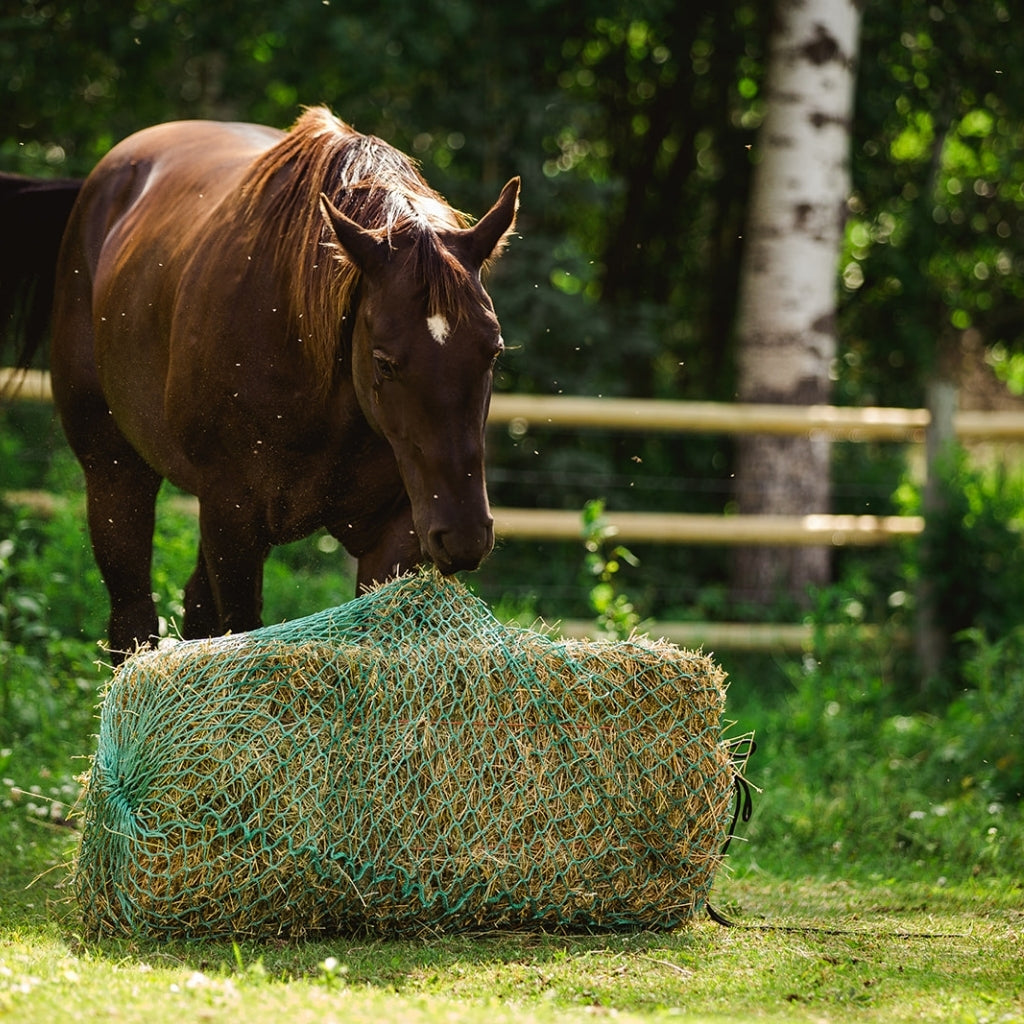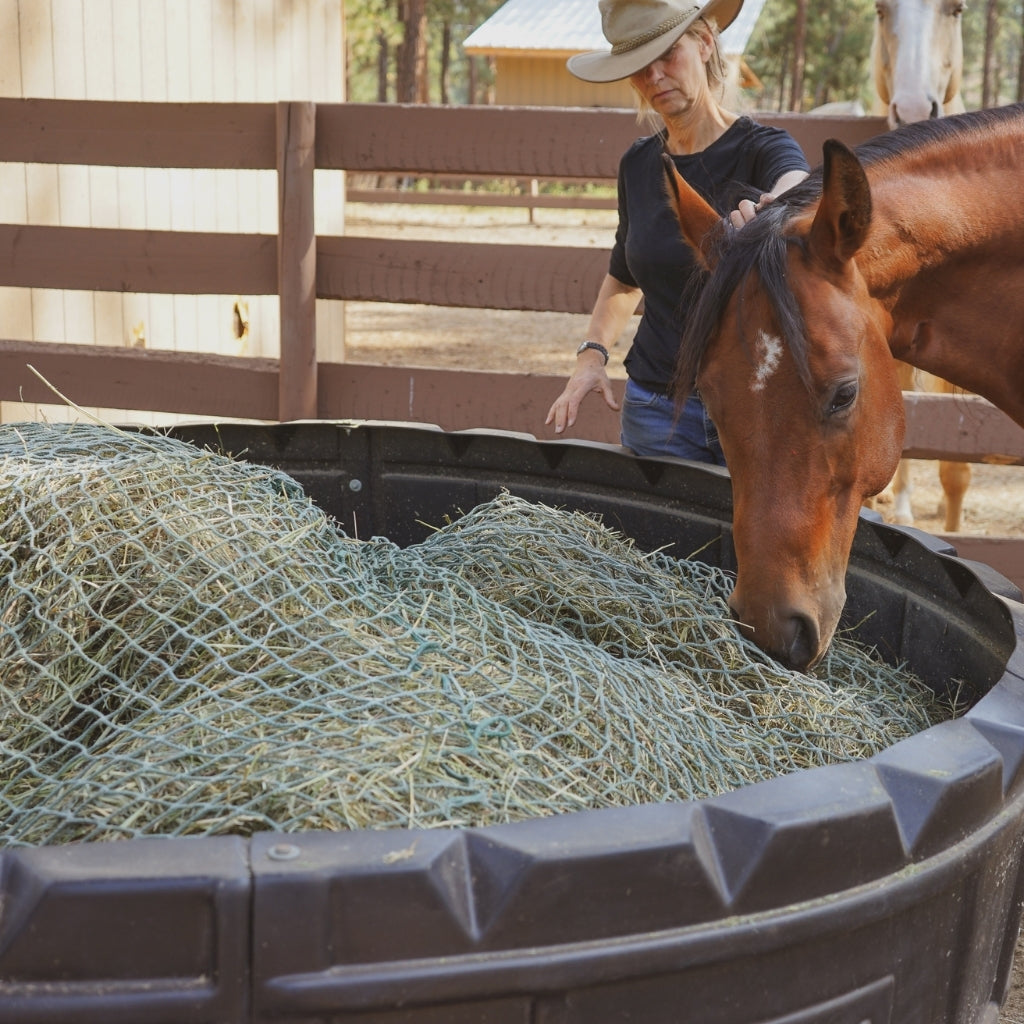Trailer Feeding Done Right: How to Choose the Right Trailer Bag Size & Hang It Safely
Trailering can be stressful for horses, as confinement, motion, unfamiliar environments, and changes to their routine all increase tension and digestive risk. Offering slow, steady access to forage while hauling helps maintain gut motility, reduces anxiety, and keeps horses occupied in transit. That’s where the Nag Bags Trailer Bag comes in — a durable, low-waste slow feeder designed specifically for use in trailers, at shows, and on the road.
In this guide, we’ll cover:
- Why sizing matters in a trailer environment
- How to fit your hay net properly in your trailer
- Safety tips for hanging height and rope placement
Why Trailer-Specific Feeding Matters
Different environment, different demands. In a trailer, space is limited, horses are tied or cross-tied, and movement adds swing and torque to anything that hangs. A standard stall hay net isn’t always ideal: it may hang too low, swing into the horse’s face, spill hay, or become a pawing hazard. Trailer-specific slow feeders like the Nag Bags Trailer Bag are built to hang securely, load easily, and reduce waste and stress while traveling.
How to Fit a Hay Net Properly in the Trailer
When using hay nets in a trailer, proper installation is essential for both safety and functionality. Here’s how to do it:
1. Find the Right Spot
Choose a spot in the trailer that:
- Allows your horse to reach the hay without overreaching or straining, providing a comfortable experience.
- Keeps the net away from legs and hooves to prevent entanglement.
- Avoids interference with trailer doors, vents, or other fixtures.
2. Use Solid Tie Points
The Nag Bag Trailer Bag offers an easy hanging option and can also be upgraded for seamless mounting.
- Add a heavy-duty swivel snap or ring for quick attachment and removal.
- Avoid tying directly to weak points, such as window bars or flip-down window points
3. Adjust for Safe Height
This is critical for preventing accidents:
- The bottom of the bag should sit just above chest level when the horse’s head is in a natural position.
- Avoid hanging too low (risk of hoof getting caught) or too high (neck strain and feeding discomfort).
Pro Tip: When using your lead rope or trailer ties, leave just enough length to maintain a natural head position without excessive slack. Having a breakaway on your tie or halter is a good idea.
4. Check for Rope Safety
- Ensure all ropes are securely tied or tucked away and have no loops.
- Never leave long, dangling ropes inside the trailer — they can wrap around legs or halters.
DISCOUNT OFFERING:
For a limited time, enjoy 15% off Trailer Bags – the perfect travel companion for shows, clinics, or hauling days. Offer valid until August 23, 2025. Use code: Trailer15 at checkout to activate the discount on trailer bag products.




